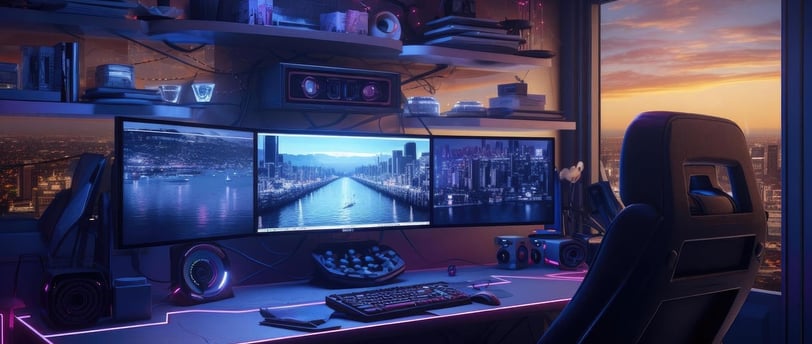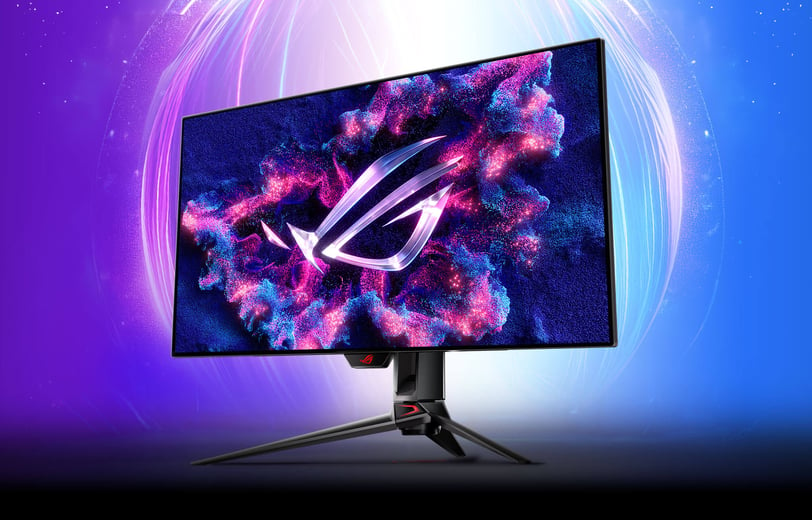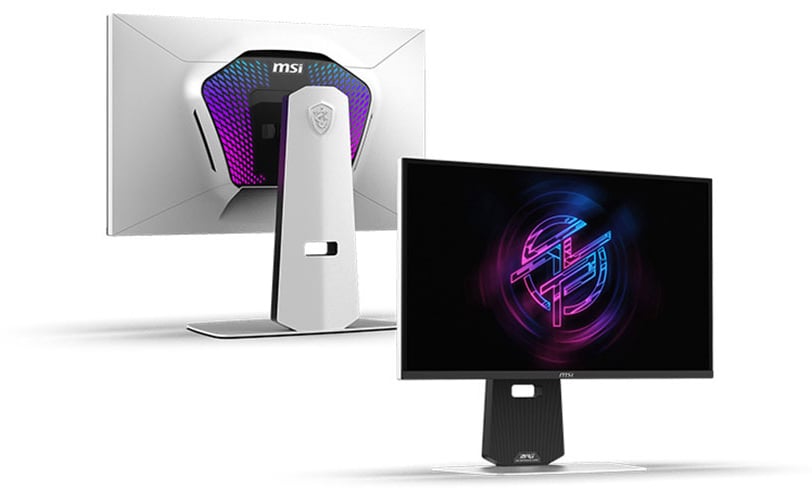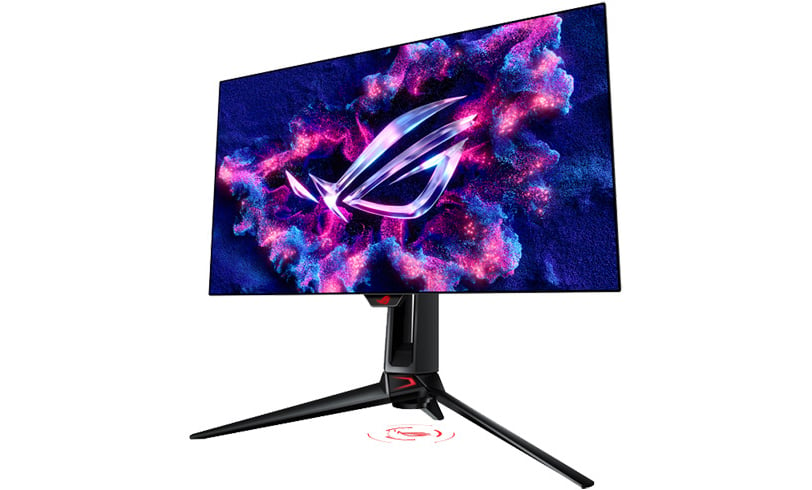
OLED vs. Mini-LED vs. QD-OLED: Which Gaming Monitor Tech is Best?
Struggling to choose between OLED, Mini-LED, and QD-OLED for gaming? We break down the best gaming monitors, comparing contrast, brightness, speed, and longevity—so you can pick the perfect screen for your playstyle.
GADGET REVIEWS
2/20/20256 min read


(image credit: Pixabay)
OLED vs. Mini-LED vs. QD-OLED: The Ultimate Face-Off
Gaming monitors are going all in, with OLED, Mini-LED, and QD-OLED battling for the top spot. Each has its own strengths, quirks, and die-hard fans, making the best choice being about how you game. If you want razor-sharp speed, deep, moody blacks, or bold, punchy HDR, the right screen won’t just look good, it’ll pull you deeper into every moment.
OLED: The Black Level King
If deep, inky blacks and cinematic immersion are what you crave, OLED is still the undisputed champion. Thanks to self-emissive pixels, OLED monitors turn off individual pixels entirely, creating true darkness with no blooming or halos. This makes horror games, stealth based titles, and visually rich story driven experiences feel more immersive than ever. Whether you’re creeping through the shadows in Resident Evil, exploring neon-lit cityscapes in Cyberpunk 2077, or diving into the cinematic depths of The Last of Us Part II, OLED delivers a level of depth and contrast that no other panel can match.
But it’s not just about contrast. OLED’s near-instantaneous response times make it a force in competitive gaming too, with minimal motion blur and ultra-smooth gameplay. If you’re playing fast-paced shooters or high-speed racing games, OLED keeps up without breaking a sweat.
Pros:
Perfect contrast & true blacks: Per-pixel lighting eliminates halos and blooming.
Instant response times: Virtually no motion blur for buttery-smooth gameplay.
Wide viewing angles: Colors stay vibrant even when viewed from the side.
Cons:
Not the brightest: Struggles against glare in sunlit rooms compared to Mini-LED.
Burn-in risks: Static UI elements (health bars, HUDs) can cause long-term image retention.
Pricey: Premium panel tech means a premium price tag, especially for larger screens.
Best For: Setups with dim or controlled lighting. Gamers who love deep blacks and cinematic experiences, and prioritize ultra-fast response times over peak brightness.
(image credit: ASUSTeK Computer Inc.)
The ASUS ROG Swift OLED PG32UCDP is the best OLED gaming monitor, combining stunning 4K resolution with a 240Hz refresh rate for an unparalleled balance of clarity and speed. Featuring a 480Hz mode at 1080p makes it a top choice for immersive single-player experiences and high-performance esports gaming. With OLED technology delivering perfect blacks, infinite contrast, and vibrant colors, it offers a true HDR experience that outshines traditional LED displays. ASUS adds burn-in prevention, adaptive sync support, and premium build quality to ensure longevity and reliability. Whether you're after cinematic visuals or ultra-responsive gameplay, this monitor is the ultimate all-rounder for serious gamers.
Mini-LED: The Brightness and HDR Powerhouse
Mini-LED has evolved into a serious contender in the gaming display arena, offering a dazzling alternative to OLED. By leveraging thousands of ultra-small LED dimming zones, Mini-LED panels push brightness levels beyond 1,500 nits, making them the undisputed champions of HDR performance. Whether you're gaming in a sunlit room or chasing the deepest shadows in a dark fantasy world, Mini-LED ensures that highlights pop and details remain crisp.
Mini-LED may not hit OLED’s perfect blacks, but it leaves traditional LED in the dust with deeper contrast and richer colors, thanks to advanced local dimming. The result? Bold visuals, an immersive gaming experience, and none of OLED’s burn-in worries.
Pros:
Blazing Brightness: HDR games shine with intense highlights, making Cyberpunk 2077 and Forza Horizon 5 pop, even in bright rooms.
No Burn-In Worries: Play as long as you want because static HUDs and marathon sessions won’t leave a mark.
Deep Contrast, Bold Highlights: Mini-LED’s precision dimming amps up blacks and brightens highlights, keeping blooming to a minimum in top-tier models.
Cons:
A Bit of Glow: Bright objects can still leave a slight halo on dark backgrounds, though newer models keep it in check.
Not OLED-Fast: Motion stays smooth, but if you’re chasing pixel perfect precision, OLED still reacts quicker.
Premium Price, Premium Performance: Cheaper than QD-OLED, but still a leap from standard LED screens.
Best for: Gamers who want OLED-level visuals with extra brightness and zero burn-in worries. Perfect for bright rooms and marathon sessions.
(image credit: Micro-Star International Co., Ltd.)
The MSI MPG 274URDFW E16M is the Mini-LED powerhouse built for gamers who want bright, bold visuals and blistering speed. With 4K at 160Hz, every detail pops, while a 1080p mode at 320Hz gives competitive players the split-second edge they need. Mini-LED backlighting cranks up brightness, deepens contrast, and keeps colors rich with barely any blooming. Loaded with DisplayPort 2.1, HDMI 2.1, and USB-C, it’s ready for PC or console. Adaptive sync, advanced cooling, and burn-in resistance make it a screen that’s built to go the distance.
QD-OLED: The Best of Both Worlds?
QD-OLED represents a breakthrough in display technology, blending the best of OLED’s self-emissive pixel control with the enhanced brightness and color performance of quantum dots. This means you get the perfect blacks and infinite contrast that OLED is known for, only now with better peak brightness and richer, more accurate colors. Essentially, QD-OLED bridges the gap between traditional OLED’s deep contrast and Mini-LED’s impressive HDR performance. But like any cutting-edge tech, it comes at a premium price.
OLED sets the bar for deep blacks and rich contrast, but struggles with brightness, especially in HDR and bright rooms. QD-OLED fixes that by using quantum dots to boost brightness and expand colors without losing OLED’s self-lit magic. The result? Bolder, brighter, and more vibrant visuals that shine in any lighting.
Pros:
Brighter than traditional OLED: Quantum dots boost brightness, making QD-OLED displays more suitable for HDR content and well-lit rooms.
Perfect blacks with enhanced color: Enjoy the deep contrast of OLED with even richer and more accurate colors.
Exceptional response times: Ultra-fast pixel response makes QD-OLED a top choice for gaming and high-frame-rate content.
Cons:
Premium pricing: As a cutting-edge technology, QD-OLED displays come at a significantly higher cost than traditional OLED or Mini-LED options.
Burn-in risks still exist: Since QD-OLED is still fundamentally an OLED-based technology. Prolonged static images can lead to image retention over time.
Limited availability: Compared to OLED and Mini-LED, QD-OLED models are currently more scarce, meaning fewer choices on the market.
Best for: Gamers who want the best of both worlds—OLED’s deep blacks and pixel-level lighting, but with the added brightness and color vibrancy of quantum dots.
(image credit: ASUSTeK Computer Inc.)
The ASUS ROG Swift PG27AQDP is for gamers who want speed, clarity, and pure immersion without compromise. Its blistering 480Hz refresh rate gives competitive players the upper hand, while the 27-inch QHD OLED panel keeps every frame crisp and smooth. QD-OLED dials up brightness and color, delivering deep blacks and punchy HDR highlights that make every game world feel alive. ASUS’s premium ROG build and NVIDIA G-Sync add to the appeal, though the high price and burn-in risks are things to keep in mind. Looking for 4K with high refresh rates? The MSI MPG 321URX QD-OLED is another top pick.
Final Verdict:
Choosing between OLED, Mini-LED, and QD-OLED isn't about picking the best technology, it's about finding the right one for your gaming needs.
OLED: Reigns supreme in contrast, delivering inky blacks and unmatched immersion. It's perfect for story driven adventures and competitive gamers who value near instant response times.
Mini-LED: Brings HDR brilliance and brightness, making it the go to choice for well-lit rooms and marathon gaming sessions without the worry of burn-in.
QD-OLED: Combines OLED’s deep, inky blacks with amplified brightness and color, forging a display that stuns in dark and bright settings. Built for gamers who demand top-tier visuals without trade-offs.
If you game in the dark and crave deep, cinematic blacks, OLED pulls you in. Need eye-searing HDR and burn-in protection? Mini-LED shines. Want OLED’s contrast with extra punch? QD-OLED blazes ahead. No matter your pick, gaming monitors have never been better, so choose your weapon and dive in.






LevelUpGamer
Your source for gaming and gadget reviews.
© 2024. All rights reserved.
Dear Readers,
Thank you for taking time out of your day to visit my blog. I appreciate the chance to share my reviews with you as I embark on this journey of being a first time blogger.
In the full effort of disclosure, I'm compelled to tell you that to enhance the quality and depth of my content, I occasionally use the help of AI tools. This helps refine my writing, provides creative suggestions, and ensures factual accuracy where needed. While the final product reflects my voice and perspective, AI plays a supportive role.
My commitment to transparency is and always will be at the forefront of what I do here. If you ever have questions about a specific piece or the process of its creation, I’m more than happy to provide further insights.
Thank you for your understanding and for being part of this journey. Your engagement and feedback will surely inspire me to keep growing and improving.
Regards,
LevelUpGamer
